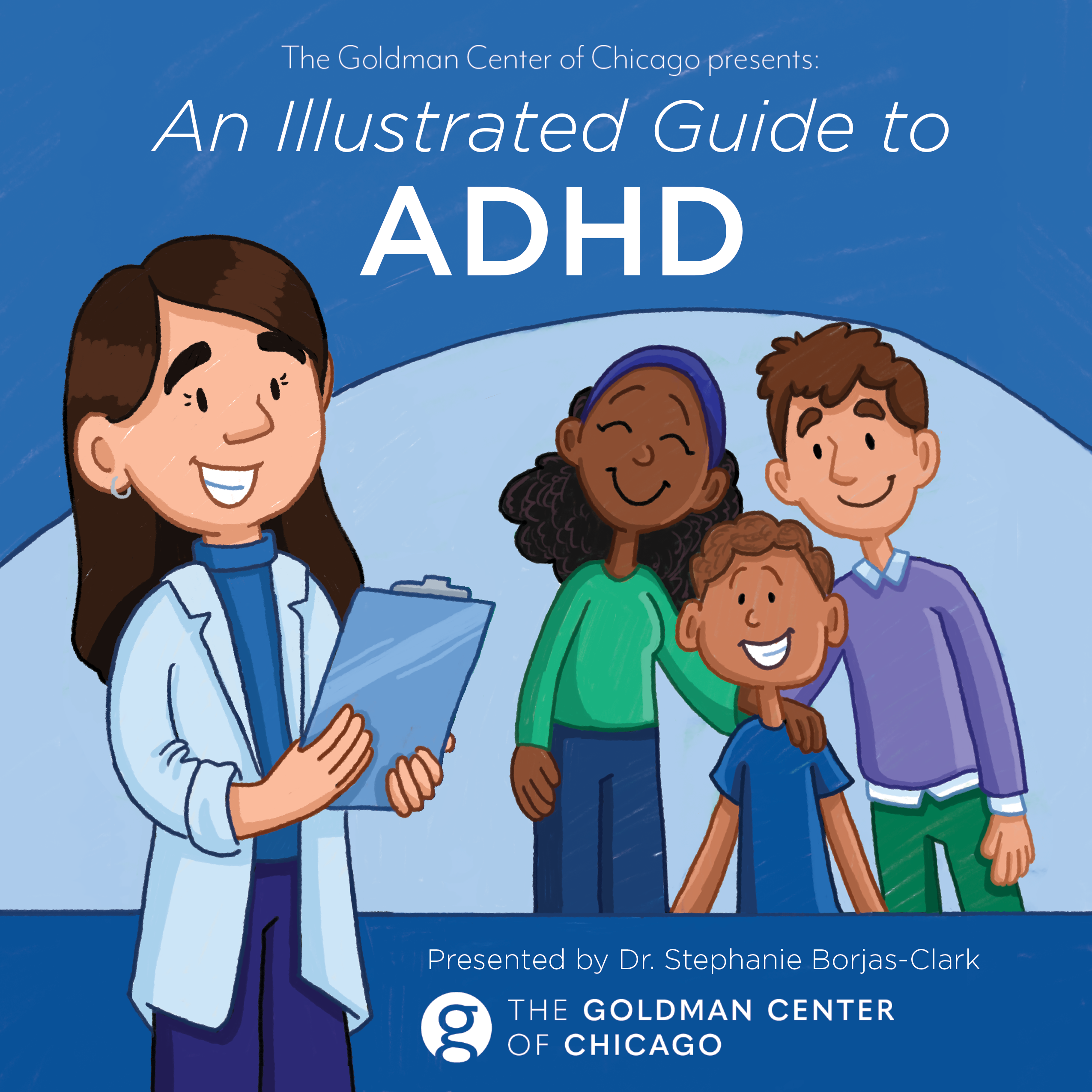Attention-Deficit/Hyperactivity Disorder (ADHD) is a neurodevelopmental condition that affects both children and adults, impacting their ability to focus, control impulses, and regulate activity levels. While ADHD can present unique challenges, with the right understanding and support, individuals with ADHD can thrive in school, work, and everyday life.
This illustrated guide will take you through the basics of ADHD, common symptoms, diagnosis, and treatment options, while shedding light on how to best support those living with ADHD. Whether you’re a parent, teacher, or healthcare provider, this guide is designed to offer clear insights into ADHD.
Understanding ADHD
ADHD affects an estimated 6.1 million children in the United States, and about 4.4% of adults also experience its symptoms. While the exact cause of ADHD is still unknown, research suggests a combination of genetic, neurological, and environmental factors may contribute to the development of the disorder. Understanding these causes can help demystify the condition and remove stigmas associated with it.
Types of ADHD
There are three primary types of ADHD, each with distinct characteristics:
- Predominantly Inattentive Type: Individuals have difficulty staying focused, paying attention, and following through on tasks. This is often referred to as “ADD” (Attention Deficit Disorder) in older terminology.
- Predominantly Hyperactive-Impulsive Type: This type is characterized by excessive energy, difficulty sitting still, and impulsive behaviors. Individuals may act before thinking or have trouble waiting their turn.
- Combined Type: The most common form, where symptoms of both inattention and hyperactivity-impulsivity are present.
Common Symptoms of ADHD
ADHD symptoms can vary widely between individuals, and they may change over time as a person grows older. Below are some of the most common signs to look for:
Inattention
- Easily Distracted: Struggling to stay focused on tasks or conversations.
- Forgetfulness: Frequently losing items or forgetting daily tasks and appointments.
- Difficulty with Organization: Trouble organizing tasks and managing time effectively.
- Avoiding Tasks: Procrastinating or avoiding activities that require sustained attention, such as homework or detailed projects.
Hyperactivity
- Restlessness: Fidgeting, tapping, or an inability to sit still in situations that require it.
- Excessive Talking: Talking non-stop, even when it’s inappropriate.
- Inability to Play Quietly: Difficulty engaging in quiet, calming activities.
Impulsivity
- Acting Without Thinking: Blurting out answers or interrupting conversations.
- Trouble Waiting: Difficulty waiting for their turn, whether in games or conversations.
- Risk-Taking Behaviors: Engaging in potentially dangerous activities without considering the consequences.
Diagnosing ADHD
Diagnosing ADHD can be complex, as symptoms overlap with other conditions such as anxiety or learning disabilities. A comprehensive evaluation by a healthcare provider is crucial in making an accurate diagnosis.
The Diagnostic Process
- Medical History: The provider will gather a detailed history, looking for symptoms and any family history of ADHD or related conditions.
- Behavioral Assessments: These include questionnaires and observations from parents, teachers, and the individual themselves.
- Physical Examination: This helps rule out other potential causes for the symptoms, such as vision or hearing problems.
- Cognitive and Academic Testing: Standardized tests may be used to assess cognitive abilities, attention span, and academic performance.
The Importance of Early Diagnosis
Early diagnosis of ADHD is crucial for effective treatment. Children diagnosed early often have better long-term outcomes, as early intervention can help manage symptoms and provide coping strategies.
Treatment Options for ADHD
While there is no cure for ADHD, a variety of treatments can help manage symptoms and improve quality of life. Each treatment plan should be tailored to the individual, considering their specific needs, strengths, and challenges.
Medication
- Stimulants: The most common type of medication prescribed for ADHD. These drugs increase the levels of certain neurotransmitters in the brain, improving attention and reducing impulsive behaviors.
- Non-Stimulants: These medications may be used if stimulants are not effective or cause undesirable side effects.
Behavioral Therapy
Behavioral therapy can be incredibly effective in helping individuals with ADHD learn to manage their symptoms. Cognitive Behavioral Therapy (CBT) is commonly used, helping individuals develop coping strategies, improve organizational skills, and build self-control.
Parent Training and Support
Parents play a critical role in supporting children with ADHD. Parent training programs offer strategies for creating structured environments, using positive reinforcement, and managing challenging behaviors.
School Support and Accommodations
Children with ADHD may qualify for special accommodations at school. These can include extended time for tests, breaks during lessons, or seating arrangements to reduce distractions.
Lifestyle Modifications
Diet, exercise, and sleep are important factors in managing ADHD symptoms. Regular physical activity can help improve attention and reduce hyperactivity. A well-balanced diet and consistent sleep schedule also play essential roles in maintaining overall health and well-being.
Supporting Individuals with ADHD
ADHD can impact every aspect of life, from academic achievement to personal relationships. But with the right support, individuals with ADHD can achieve success in all areas of life.
At Home
- Create Structure: Establish clear routines and stick to them. Visual schedules can be especially helpful for younger children.
- Set Clear Expectations: Consistency is key when it comes to discipline and setting expectations. Use positive reinforcement to encourage desired behaviors.
- Provide Breaks: Allow for frequent breaks during tasks that require concentration, as this can help manage restlessness.
At School
- Advocate for Accommodations: Work with teachers and school administrators to ensure your child has access to necessary accommodations.
- Stay Involved: Maintain regular communication with teachers to stay informed about your child’s progress and any concerns.
In Relationships
- Be Patient: ADHD can affect communication and attention in relationships. Practice patience and understanding.
- Set Clear Boundaries: Establish boundaries to help manage impulsive behaviors that may interfere with relationships.
Conclusion: Embracing ADHD as Part of Life’s Journey
ADHD may present challenges, but it also comes with unique strengths, such as creativity, problem-solving, and perseverance. Understanding ADHD, advocating for appropriate support, and celebrating an individual’s strengths can help them lead a fulfilling and successful life.
This guide serves as a reminder that with the right tools and support, individuals with ADHD can thrive in all aspects of life. Whether you’re a parent, educator, or healthcare provider, your role in supporting someone with ADHD is invaluable. Keep learning, stay compassionate, and celebrate the incredible potential of individuals with ADHD.






